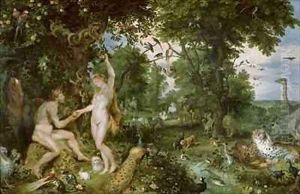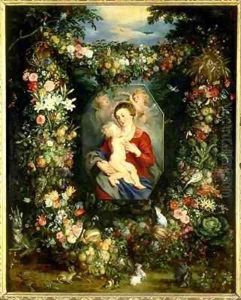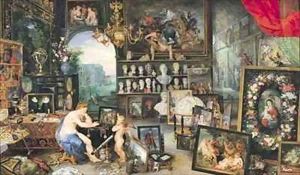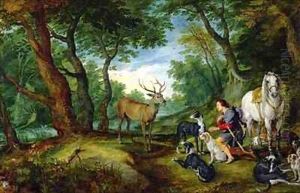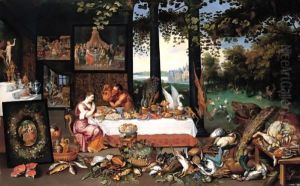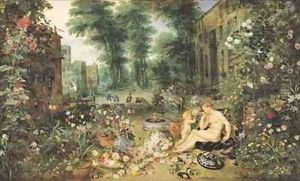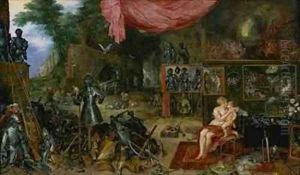Jan & Rubens, P.P. Brueghel Paintings
Peter Paul Rubens was a towering figure in the Baroque art movement, a period characterized by dramatic intensity, rich color, and vibrant light and shadow. Born on June 28, 1577, in Siegen, Nassau-Dillenburg (now Germany), Rubens was a prodigious talent who would go on to influence European art profoundly. His family moved to Cologne shortly after his birth, fleeing the religious turmoil in the Spanish Netherlands. Eventually, they returned to Antwerp, where Rubens was raised and educated. He was apprenticed to several leading painters in the city and by 1598, had become a master in the Antwerp Guild of St. Luke. Rubens's early work was influenced by Italian artists, which is evident in his mastery of the human form and the emotional intensity of his compositions. In 1600, he travelled to Italy, where he was deeply influenced by the work of Renaissance masters like Titian, Tintoretto, and Caravaggio. This experience would shape his artistic style, blending the realistic portrayal of figures and emotions with dynamic compositions and a vibrant palette.
During his illustrious career, Rubens worked for many of Europe's most important courts and collectors, creating altarpieces, portraits, landscapes, and history paintings. His works were celebrated for their sensuality, exuberant color, and the fluidity of their figures. Rubens also played a significant role as a diplomat, which influenced some of his works that depicted peace and reconciliation themes. He married Isabella Brant in 1609, and after her death, Helena Fourment, whose beauty inspired many of his later works. Rubens's impact on the art world was immense, not just in painting but in fostering an appreciation for classical art and influencing his contemporaries and generations of artists to come. He died on May 30, 1640, in Antwerp, leaving behind an extraordinary body of work that continues to be celebrated for its emotional depth, technical mastery, and vibrant vitality.
